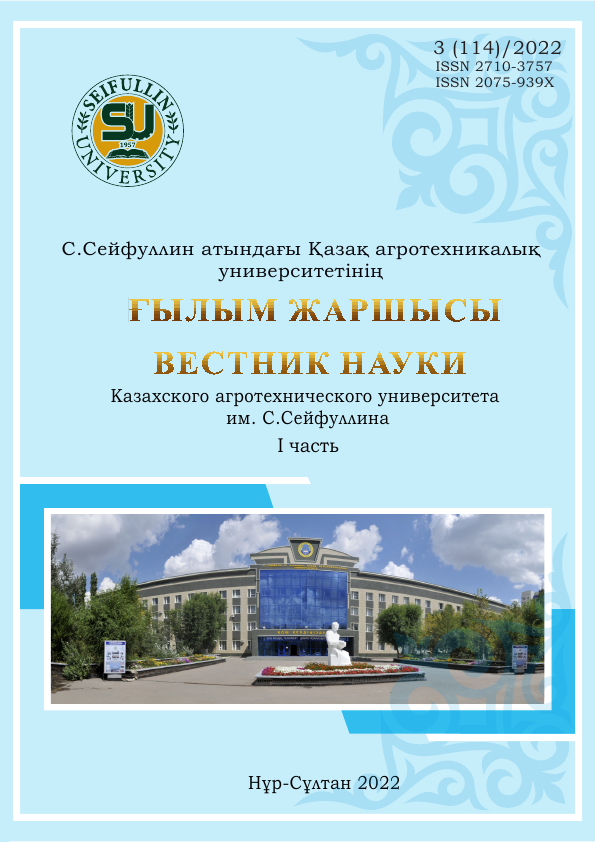ANALYSIS OF PRESERVATION OF FOREST CROPS IN THE GREEN ZONE OF NUR-SULTAN CITY
DOI:
https://doi.org/10.51452/kazatu.2022.3(114).1155Keywords:
conservation; forest plantations; green zone; tree speciesAbstract
The purpose of the research was to analyze the preservation of forest crops in
the green zone of the city of Nur-Sultan on conditionally forest-suitable soils.
Ulmus laevis (74.79%), Acer negundo (64.68%) and Elaeagnus angustifolia
(64.64%) were the most preserved in the forest cultures of the 1st stage. Average
retention varied over the years. More favorable for the preservation of all breeds
were 2012 and 2013. The lowest safety was in the Elaeagnus angustifolia (84.4%),
in Acer negundo and Ulmus laevis - it exceeded 90%. In Pinus sylvestris and
Betula pendula poorly adapted to saline soils, this trait was 52.6 and 65.8%,
respectively, which is a fairly high figure for these species. In other years, the
preservation fluctuated at an average level of 60-80%. In the forest plantations of
the II stage, as the preservation decreases, the following tree species can be
indicated: poplar (100.0%), Salix acutifolia (82.15%), Ulmus laevis (78.84%),
Acer negundo (74.60%), Ribes aureum (57.61%), Malus baccata (52.40%),
Elaeagnus angustifolia (50.34%), Pinus sylvestris (41.40%). The degree of
adaptability of trees to soil salinity with decreasing resistance was revealed: Ulmus
laevis, Acer negundo, Salix acutifolia, Ribes aureum, Elaeagnus angustifolia,
Malus baccata, Betula pendula and Pinus sylvestris.

